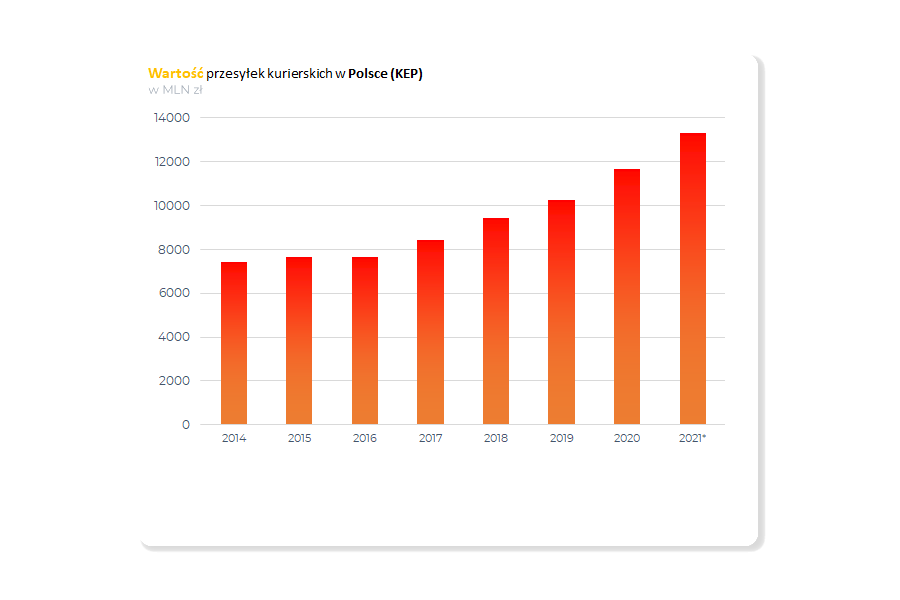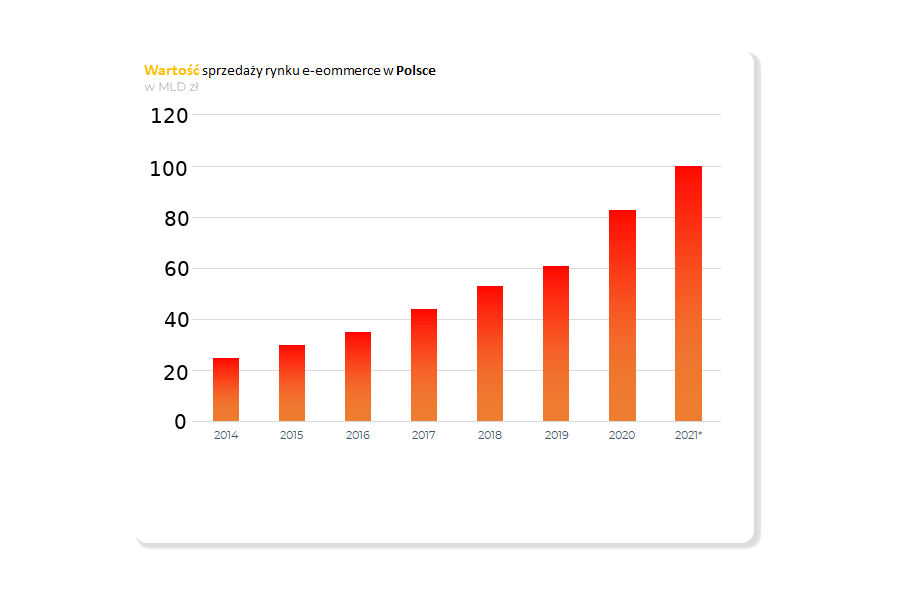There are two specific industries that are linked by an unbreakable bond. One is experienced, with well-established principles and traditions, while the other stands out for its freshness and enormous potential for opportunities. The transportation industry, as well as e-commerce, for these are the service markets in question, still has many challenges and unknowns ahead. Adapting to rapid transformations and being able to turn the perception of a threat into an opportunity will be crucial for carriers and e-commerce players. So what are the predictions?
Gaining a broader perspective and predicting potential events that may affect the flourishing and development of an industry is extremely difficult. This is because there are situations, as we can observe today, beyond any control, and the possibility of detecting them in advance is minimal. The main tool through which we will obtain some necessary information is analysis. Breaking down the main elements into parts, examining them in terms of key development factors and the data obtained from past, as well as present, activities will build some outline of the future. But first...
Back to the past
The development of virtual commerce is indirectly linked to military technology and the fear of nuclear war. In 1969, the prototype of the Internet as we know it today is created. The Advanced Research Projects Agency (ARPA) in California, creates the ARPANET network , which is designed to keep the most important lines of communication connected in the event of a nuclear bomb being set off. Another factor stimulating the way forward for the Internet is EDI , or electronic data interchange. The stimulus in this case was business and the ability to quickly exchange data, as well as the documents necessary to finalize business transactions.
A unique event took place in 1979, when a British entrepreneur, Michael Aldrich, combined the previously mentioned EDI system along with a television set and a computer. Such a mix provided the ability to select an assortment in real time and automatically send the order to the store, a primitive form of virtual shopping. The breakthrough, however, came in the 1990s, when the United States lifted its ban on commercial use of the Internet. The initial form of shopping was based on orders processed via e-mail box or telephone, until 1994, when special shopping forms were introduced. This is also the year that Amazon, the world's largest online store, is founded, and the e-commerce industry begins a real expansion.
Virtual commerce in Poland does not have a long tradition. It is interesting to note that in the year of the founding of Jeff Bezos' online store , the first Polish online bookstore is created. Two years later, a pioneering online store is established, and in 1999, a turning point is reached with the establishment of the Allegro auction service. The rapid pace of establishing new e-shops and moving industries precisely into the sphere of virtual activities begins.
Numbers don't lie - present and future
The current situation of e-commerce in Poland and the world is best presented with the help of available data. It is estimated that more than 20,000,000 virtual stores have been established around the world. In Poland alone it is about 90,000, and the number of all online sellers is as high as 150,000! This huge number, on a global and national scale, shows the stability and strength of this part of the economy, which has a strong development trend.
According to the Global Ecommerce 2020 report, it is the Central and Eastern European area that led last year in sales through online channels, with the value of growth estimated at more than 21%. We are one of the most intensively developing countries in this regard, as evidenced by the first place in the European arena of those who have increased online operation due to the pandemic. E-commerce in Poland last year is worth 100 billion zlotys, and this is still not the last word. According to the PwC study "Prospects for the development of the e-commerce market in Poland", revenues are expected to increase by another 26 billion zlotys by the end of 2026, with an average annual growth rate of as much as 12%.
Interesting data on the Polish e-commerce market is presented in the report " E-commerce in Poland. Gemius for e-Commerce Poland ". Here are some of the most important conclusions:
- the number of Internet users in Poland is over 28 million,
- 73% of Internet users have made a purchase online,
- 7/10 of those surveyed choose a Polish online store,
- the most popular shopping categories are clothing, cosmetics, books, records, movies and tickets for cultural events,
- online shopping is encouraged by the 24/7 ability to purchase a product, convenience of the transaction and price competitiveness,
- the preferred form of delivery is parcel and courier transport,
- the most popular devices used for virtual shopping are laptops, smartphones, desktop computers and tablets.
The aforementioned PwC report points to several future developments that can be suggested with high probability. A significant increase in interest in FMCG (fast moving consumer goods), or simply the grocery industry, is predicted. Other divisions, which are expected to grow several percentage points per year over 5 years, are children's items and health and cosmetics assortments. This knowledge will certainly be useful to all owners of their own online business.
E-commerce and the transport services market
The transport industry provides services that enable the proper functioning of hundreds of entrepreneurs and thousands of final consumers. At the same time, there are many obstacles that disturb the smooth operation of the comprehensive logistics process. These include recent disruptions to international travel due to border crossing difficulties, as well as quarantine rules. TSL (transport-forwarding-logistics) and KEP (courier services) companies that were able to see and use the potential of e-commerce not only maintained their position, but also experienced significant expansion.

It can be clearly seen that the increase in the value of the courier parcel market is consistent with the dynamics of the increase in the value of the e-commerce market. A clear increase in both cases is noticeable at the turn of 2019 - 2020.

Added value
The enormous possibilities of virtual trade also mean considerable competition and a multitude of solutions offered. Therefore, sellers operating in this sector must differentiate themselves with exceptional quality and service. The basic way to build a lasting relationship and the desired customer experience is to use a proven and comprehensive courier company for this purpose.
Research shows that the motivation of a potential customer who resigns from finalizing the process of purchasing an item is due to transport issues. Too high costs of providing the transport service, long waiting times for shipment transport, complications associated with complaints or returns are grounds for withdrawing from the order and simply discourage you. The buyer wants our parcel to be handled efficiently and without complications. However, if they do occur, they must be resolved smoothly.
The transport operator must offer optimal solutions:
- postal and courier distribution,
- area of national operation or global transport,
- various types of distribution: standard, priority, registered,
- road, air, rail transport,
- possibility of sending from various points,
- shipment insurance,
- consumer returns service and additional services.
Another very important issue of deliveries is matching customer preferences, and these are clear. Due to convenience, safety and hygiene reasons, as well as the need to limit personal contact, recipients choose a parcel locker. Such a device has numerous advantages that are also noticed by users themselves.
In addition to the above-mentioned hygienic benefits, a parcel storage machine is usually placed in an attractive location, such as a gas station or retail outlet. Easy and 24-hour access allows for trouble-free collection of the ordered goods, while also providing the opportunity to perform other tasks that may be related to the collection point. Additionally, the parcel locker is designed to collect various types of packages and is a universal solution.
Synergy means more - summary
In today's world, the only certain factor is change, and the ability to quickly adapt may determine the company's future on the market. Despite such a difficult task as forecasting the future economic situation, there is a sector whose prospects are very promising. E-commerce in Poland and around the world is developing every year, and the current crisis may also be an opportunity for development for others.
An example is the transport services market, which has experienced significant operating restrictions. With an increase in e-commerce orders, local and international carriers are feeling some relief. Bearing in mind the highest quality and versatility of the service, as well as the use of innovative parcel handling solutions, such as the parcel locker, both industries will have a profitable future.








